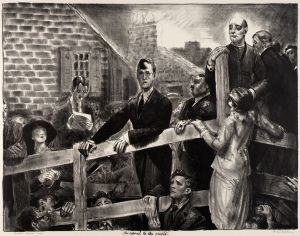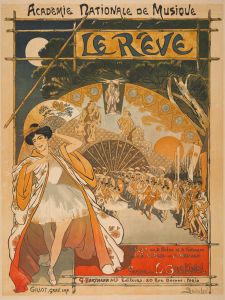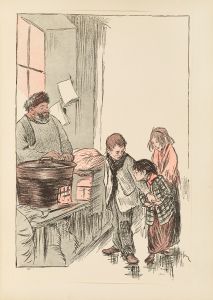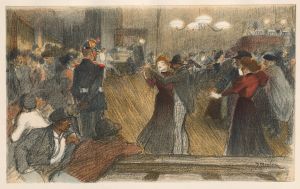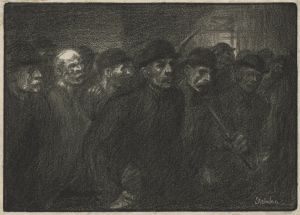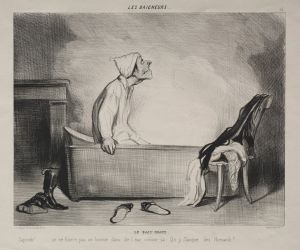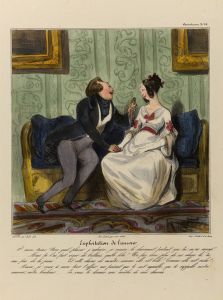
Science travail
A hand-painted replica of Théophile Alexandre Steinlen’s masterpiece Science travail, meticulously crafted by professional artists to capture the true essence of the original. Each piece is created with museum-quality canvas and rare mineral pigments, carefully painted by experienced artists with delicate brushstrokes and rich, layered colors to perfectly recreate the texture of the original artwork. Unlike machine-printed reproductions, this hand-painted version brings the painting to life, infused with the artist’s emotions and skill in every stroke. Whether for personal collection or home decoration, it instantly elevates the artistic atmosphere of any space.
Théophile Alexandre Steinlen (1859-1923) was a Swiss-born French artist, most renowned for his contributions to the Art Nouveau movement and his prolific work as an illustrator and painter. One of his notable works is "Science et Travail" (Science and Work), which reflects his deep engagement with social issues and his commitment to depicting the lives of the working class.
"Science et Travail" was created during a period when Steinlen was heavily involved in the artistic and intellectual circles of Montmartre, Paris. This area was a hub for artists, writers, and thinkers who were often concerned with the social and political issues of their time. Steinlen, known for his empathy towards the working class and his socialist leanings, used his art to highlight the struggles and dignity of laborers.
The artwork "Science et Travail" is a powerful representation of the intersection between intellectual pursuits and manual labor. Steinlen's composition typically features workers engaged in various forms of labor, juxtaposed with elements that symbolize scientific progress and intellectual endeavor. This duality reflects the artist's belief in the importance of both physical and intellectual contributions to society.
Steinlen's style in "Science et Travail" is characterized by his detailed and realistic portrayal of human figures, combined with a strong sense of composition and narrative. His use of line and shading brings a sense of depth and emotion to the scenes he depicts, making the viewer acutely aware of the physical and emotional toll of labor. The artwork often includes symbolic elements, such as books, tools, and machinery, which serve to underscore the theme of the harmonious relationship between science and work.
Throughout his career, Steinlen was associated with various publications and political movements that advocated for social justice. His illustrations frequently appeared in socialist and anarchist publications, where they were used to draw attention to the plight of the working class and to promote progressive ideas. "Science et Travail" can be seen as part of this broader body of work, reflecting Steinlen's commitment to using his art as a means of social commentary and advocacy.
Steinlen's influence extended beyond his immediate circle, impacting the broader art world and contributing to the development of social realism in art. His works, including "Science et Travail," continue to be celebrated for their technical skill, emotional depth, and social relevance. Today, Steinlen's art is held in high regard, with pieces displayed in major museums and collections around the world, serving as a testament to his enduring legacy as an artist who bridged the gap between art and social consciousness.
In summary, "Science et Travail" by Théophile Alexandre Steinlen is a significant work that encapsulates the artist's dedication to depicting the lives of the working class and his belief in the importance of both intellectual and manual labor. Through his detailed and emotive style, Steinlen created a powerful narrative that continues to resonate with audiences today.





